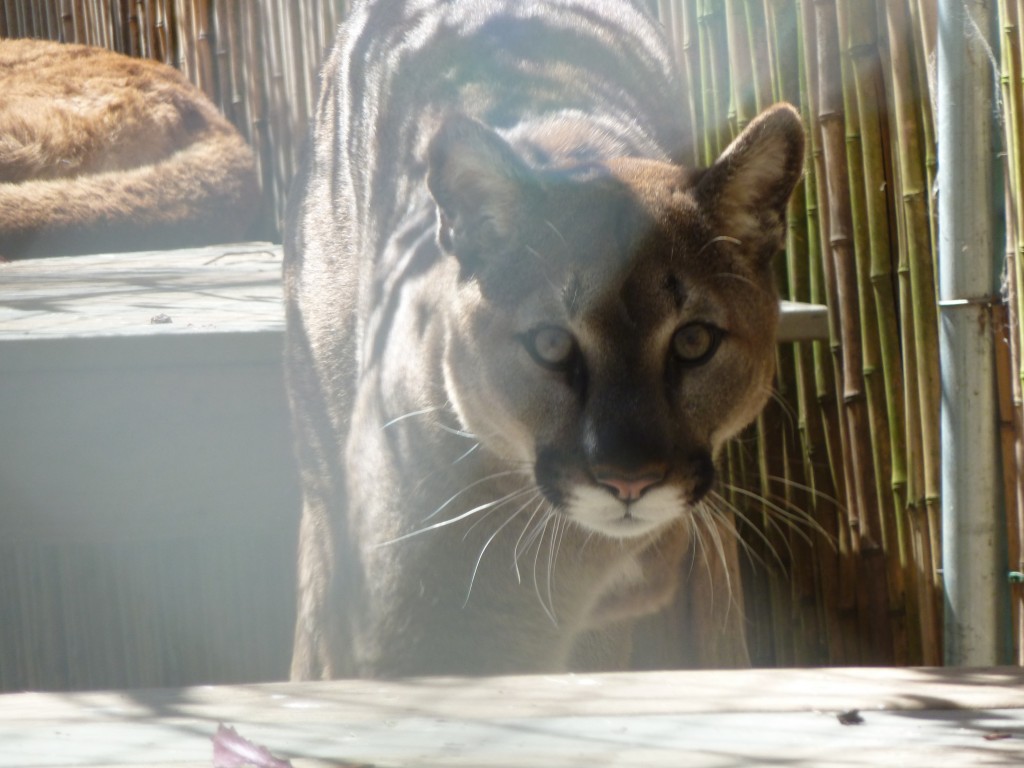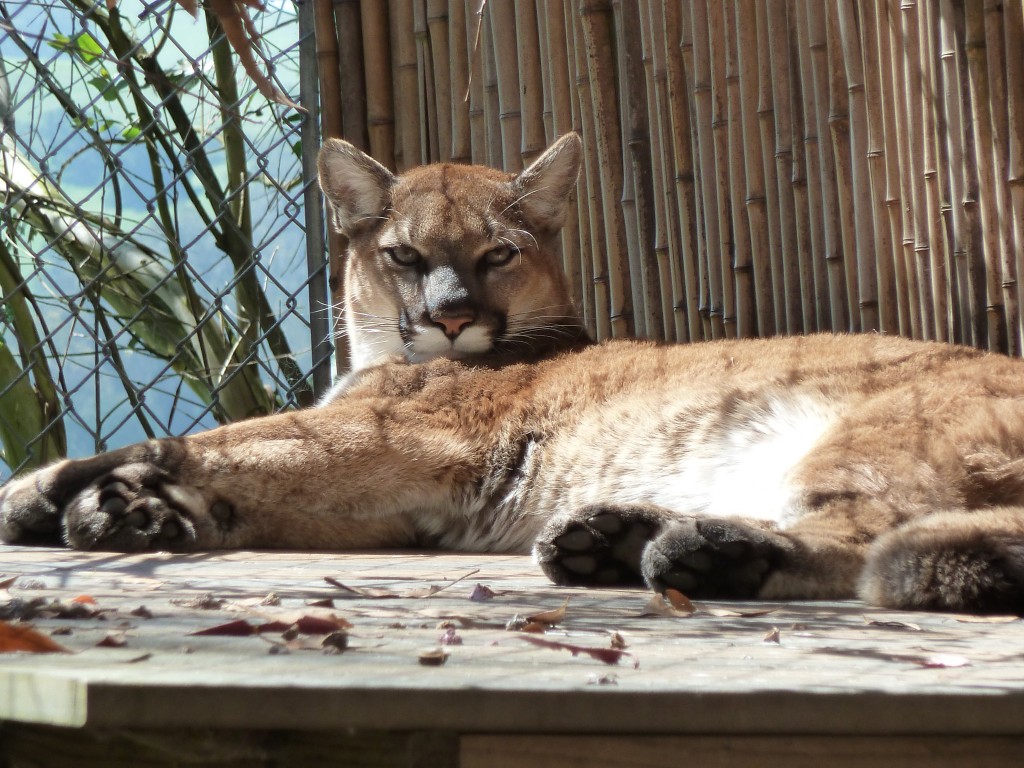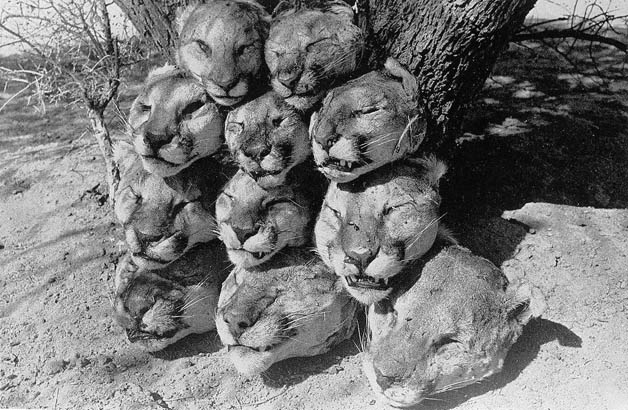 My friends like to joke that I have a problem when it comes to carnivores, not of the human variety but of the order Carnivora. I’m the first to admit an inordinate fondness for predators (to paraphrase the possibly apocryphal trope attributed to evolutionary biologist J.B.S. Haldane), particularly of the Felidae family. But my fascination relates more to their cryptic nature and our complicated feelings about them than to wanting to make them part of my family. (Full disclosure: I did take care of 21 neighborhood strays during the nineties, on a mission to spay and neuter as many feral felines as possible in San Francisco’s Sunset District, cat colony central at the time. But that’s another story.)
My friends like to joke that I have a problem when it comes to carnivores, not of the human variety but of the order Carnivora. I’m the first to admit an inordinate fondness for predators (to paraphrase the possibly apocryphal trope attributed to evolutionary biologist J.B.S. Haldane), particularly of the Felidae family. But my fascination relates more to their cryptic nature and our complicated feelings about them than to wanting to make them part of my family. (Full disclosure: I did take care of 21 neighborhood strays during the nineties, on a mission to spay and neuter as many feral felines as possible in San Francisco’s Sunset District, cat colony central at the time. But that’s another story.)
Our species has a love-hate relationship with big carnivores that has little to do with their true nature. More and more Americans are treating tigers, African lions, and cougars as little more than scaled-up housecats, a disturbing trend that shows no sign of abating since U.S. Fish and Wildlife implemented a ban on the interstate trade of the formidable felines in 2007. U.S. laws prohibiting the trade of exotic wildlife hadn’t included big cats presumably because officials never imagined anyone would consider raising 500-pound predators as pets. (Possession falls under state jurisdiction.) Today, animal protection groups estimate, as many as 20,000 wild felids, from Siberian tigers to snow leopards, live in American backyards and basements.
You know it won’t turn out well. It’s just a matter of time.
Then there’s the opposite extreme. Some folks see mountain lions (and their carnivore cousins) as unacceptable threats to life and livelihood. In California, it’s easy enough to secure a depredation permit from state Fish and Game to kill lions suspected of harming pets or livestock, yet some still prefer the old “shoot, shovel, and shut up” strategy. Shooting protected wildlife is illegal, of course, and California voters banned mountain lion hunting in 1990.
But for a vocal group of ranchers and farmers in San Benito County, a rural outpost of San Jose, lions didn’t need protection then and don’t need it now. The “overprotected” cats, they say, are looting calves, decimating deer, and menacing local residents.
Their long-simmering movement to reinstate a lion count—a prelude to reinstating hunting—reached the boiling point in 2009, when a rancher and former county Fish and Game Advisory commissioner wrote an op-ed in the local paper blaming the “do gooder” hunting ban for setting an unchecked lion population loose on the community. “If a count shows that the lion population has exceeded the state’s caring [sic] capacity,” he wrote, “something should be done before we have another endangered species or another person or child killed.”
(For the record, Fish and Game lists six verified fatal attacks in California since 1890, the last in Orange County in 2004. No attacks have ever been confirmed in San Benito County.)
Soon after the op-ed ran, the county agriculture commissioner sent a nearly identical appeal to the San Benito Board of Supervisors, which obliged by asking California Fish and Game for an intensive survey. In May, the Board, apparently tired of waiting, appealed to the Regional Council of Rural Counties, a lobbyist for rural landowner interests, to pressure Fish and Game to start counting. And just last week, the editorial board of the same paper pressed the case for a count again, complaining that the state spends millions to preserve a species with no scientific justification or real management plan.
The thing about counting cats is there’s just no good way to do it over a large area. Biologists think in terms of population densities and how many lions a given habitat might support (estimating as many as 10 per 100 square miles). And aside from capturing and collaring lions within a given region to study their ecology, behavior, and population dynamics, biologists really don’t care about numbers per se.
Supporters of the count claim the state’s lion population has been rising for years, leading to more sightings and more conflicts. It’s the same argument those clamoring for more cougar hunts in Washington State made after voters banned hound hunting there. The state responded by handing out cougar hunting tags like candy.
As it turned out, the cougar population wasn’t soaring, field and genetic studies showed, but tanking. Animals involved in conflicts with humans were probably young males, the researchers suspected, in keeping with the prevailing view that carnivore-human run-ins follow predictable patterns.
Roving juveniles, still learning the art of the hunt, and grizzled elders are more likely to target sheep and calves, easy pickings compared to deer, long selected for vigilance and speed. But that doesn’t mean they eat only livestock or represent a special “problem class.” And though cougars commonly take the rap for declining mule deer numbers throughout the West, the studies simply haven’t been done to account for habitat loss and factors like drought, starvation, disease, and competition from other grazers, which vary by region and season.
Rick Hopkins, who’s studied California mountain lions for nearly 30 years, told me that some of the folks behind the cougar census campaign think you have to kill things to manage them, “and if you don’t kill them they’ll take over the world.”
 We may like to believe that the notion of cougars as vermin disappeared with the bounty. But recently I happened upon a blog by Native American Studies professor Steve Pavlik, and the infamous photo of mangled lion heads piled in a ghoulish pyramid—from 1989—a stark reminder that the codes of the past die hard. The photo is often credited to wildlife photographer Steve Johnson, but Johnson told me it was taken by an Arizona Fish and Game biologist who was fed up with the indiscriminate killing of lions to protect livestock on public land in Aravaipa Canyon, Arizona. The biologist sent it to Johnson, who distributed it far and wide.
We may like to believe that the notion of cougars as vermin disappeared with the bounty. But recently I happened upon a blog by Native American Studies professor Steve Pavlik, and the infamous photo of mangled lion heads piled in a ghoulish pyramid—from 1989—a stark reminder that the codes of the past die hard. The photo is often credited to wildlife photographer Steve Johnson, but Johnson told me it was taken by an Arizona Fish and Game biologist who was fed up with the indiscriminate killing of lions to protect livestock on public land in Aravaipa Canyon, Arizona. The biologist sent it to Johnson, who distributed it far and wide.
Whether you fear, revile, or revere what Wallace Stegner called “this species of such evolved beauty and precise function” ultimately comes down to values with deep cultural roots—and they don’t change just because some law changes. If we continue to take out lions for doing what comes naturally (or putting them in basement cages for that matter), what will we have left?
The evolutionary forces that differentiate a lion from a housecat aren’t random, as big cat experts note in a recent book on wild felid biology and conservation. “If we lose wild felids,” they conclude, “then perhaps the domestic cat’s mannerisms—the pounce, the growl, the face-rub—will remind us of felids past, but that will be all.”
___________
Liza Gross, a senior editor at PLoS Biology and freelance journalist, lives with her husband and two domestic felids in Kensington, California.
Photo credits: Kuma and Kyla, abused by poachers who killed their mother, now under the care of Doris Duncan at Sonoma County Wildlife Rescue, by Liza Gross. Severed lion heads, Arizona Fish and Game Department file photo, courtesy of Steve Johnson.